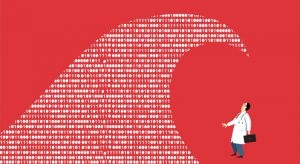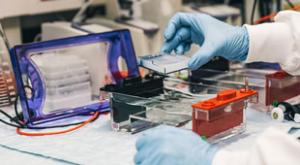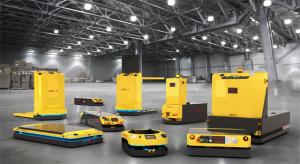All Features

Steven I. Azizi
It has been more than five decades since Title VII of the Civil Rights Act of 1964 was enacted to outlaw harassment and discrimination against workers in American workplaces. Unfortunately, workplace harassment is still a serious problem for millions of workers in the country.
Different forms of…

NIST
Smart sensors play a critical role in smart grids, supporting bidirectional flows of energy. Such sensors are needed for real-time monitoring of energy flow; controlling power generation, transmission, and distribution to customers; and protecting the overall power systems.
However, the…

Anas Hassan
Very few businesses today rely on push marketing alone as their strategy to ultimately produce sales. Although the larger picture of inbound marketing is proving itself effective, marketers continue to debate the relative value of content marketing vs. social media marketing. But here’s the spoiler…

Gary Shorter
Predictive and prescriptive insights driven by data analytics have risen to prominence as tools that can help research teams cut the time, complexity, and cost of clinical trials. At the same time, these insights can enhance the quality of a study and accelerate new drugs to market. But to uncover…

Lisa Apolinski
The pandemic arrived and brought with it many new and surprising changes in how companies do business. One of the most interesting, and most impactful, changes for organizations has been how consumers engage with brands. A recent survey indicated that consumers are rethinking how they interact with…

Paul Smith
Good leaders ask, “How do I tell better stories?” Great leaders ask, “Which stories do I need to tell?”
Does that mean how you tell a leadership story doesn’t matter? Of course not. But if you tell an irrelevant, unimportant, or self-serving story, it doesn’t matter how well you tell it. The story…

Nicholas P. Sullivan
People in the world’s developed nations live in a post-industrial era, working mainly in service or knowledge industries. Manufacturers increasingly rely on sensors, robots, artificial intelligence, and machine learning to replace human labor or make it more efficient. Farmers can monitor crop…

Harish Jose
T he dictum, “purpose of a system is what it does” (POSWID) is famous in cybernetics, attributed to the management cybernetician Stafford Beer.
Beer notes: “A good observer will impute the purpose of the system from its actions and thus from the resultant state.”
Hence the key aphorism and acronym…

NIST
Tiny biological computers made of DNA could revolutionize the way we diagnose and treat a slew of diseases, once the technology is fully fleshed out. However, a major stumbling block for these DNA-based devices, which can operate in both cells and liquid solutions, has been how short-lived they are…

Oliver Laasch
It’s been a tough few years for people who own or manage a business. Lockdowns shut down whole industrial sectors worldwide, turning profitable businesses into loss-making ones, while a lot of smaller businesses went under.
Many companies will now be hoping for a return to some type of normality…

Mike Kotzian
The pandemic both reduced the available workforce and accelerated online sales. Warehouse operations grew and had to handle increased volume with fewer employees. Prior to Covid-19, the answer to this problem was to hire more fork truck drivers. Now, companies have difficulty finding trained fork…

Knowledge at Wharton
More than a half-million healthcare workers in the United States have quit their jobs in recent months, driven to the breaking point by the Covid-19 pandemic. But greater use of technology could help save jobs by reducing the kinds of inefficiency and stress that lead to burnout for many hospital…

Paul Laughlin
As I started reading The Book of Why: The New Science of Cause and Effect, by Judea Pearl and Dana Mackenzie (Basic Books, 2018), I was reminded how often analysts trot out the bromide “correlation is not causation.” It’s a well-known warning. Indeed, I often encourage those learning data…

Donald J. Wheeler
Students are told that they need to check their data for normality before doing virtually any data analysis. And today’s software encourages this by automatically providing normal probability plots and lack-of-fit statistics as part of the output. So it’s not surprising that many think this is the…

Richard S. Hawkes
Adapted from Navigate the Swirl by Richard Hawkes, CEO of Growth River
How many meetings have you been in that caused you to ask yourself, “Why am I here? What am I doing? What’s the purpose of this meeting? Are we accomplishing anything?” I call this “The Swirl.”
High activity, low focus.…

Quality Digest
This year’s World Conference on Quality and Improvement (WCQI) will be a hybrid event—online and in person—scheduled for May 15–18, 2022, in Anaheim, California. Themed as “The art and science of quality,” the conference will explore the symbiotic relationship between human and scientific aspects…

Bruce Hamilton
In 1985, about the time I was discovering there was a better way to produce products, The Natural, a film about an aging baseball player with extraordinary talent, was garnering multiple Academy Awards. This archetype concerning natural “God-given” abilities is common in Western culture—in sports…

Gleb Tsipursky
The biggest falsehood in business leadership and career advice may also be the most repeated: “Go with your gut.” Surely you’ve heard this advice often as a decision-maker, as well as some variations of that phrase, such as, “Trust your instincts,” “Be authentic,” “Listen to your heart,” or “Follow…

Kate Zabriskie
‘Kendra, I think you’re going to do wonderfully at this next task. You have a good eye for detail, and that’s exactly what’s required here.”
“Tom, you have a real knack with people, and I’d like you to take on a temporary role in account management. I think you will thrive based on what I’ve seen…

NIST
To combat Covid-19 amid supply shortages in 2020, healthcare facilities across the United States resorted to disinfecting personal protective equipment (PPE), such as N95 masks, for reuse with methods such as ultraviolet (UV) light. But questions lingered about the safety and efficacy of these…

Sowmya Juttukonda
By 2035, artificial intelligence (AI) is expected to increase business productivity by up to 40 percent. It’s already a part of people’s daily lives and its use is only expected to increase to solve more critical problems that assail our world.
Businesses are looking at AI to achieve cost-…

Eric Pauley
Organizations’ failure to properly manage the servers they lease from cloud service providers can allow attackers to receive private data, as research my colleagues and I conducted has shown.
Cloud computing allows businesses to lease servers the same way they lease office space. It’s easier for…

Mark Hembree
As a late Boomer, I can say my particular age group is better positioned than any to marvel at and bemoan what’s become of journalism and publishing in the last 40 years.
Not that I’m a Luddite. The advent of word processors was a boon to ham-fisted typists like me. A word processor that actually…

Andrew Myers
Standard image sensors, like the billion or so already installed in practically every smartphone in use today, capture light intensity and color. Relying on common, off-the-shelf sensor technology—known as CMOS—these cameras have grown smaller and more powerful by the year and now offer tens-of-…

Jonathan Gilpin
Regardless of how much we, as a society, are able to implement and use technologies in business, global supply chains will always be dependent on the ways in which people interact with one another.
Even local supply chains can be problematic, but it’s predominantly global ones that can pose…